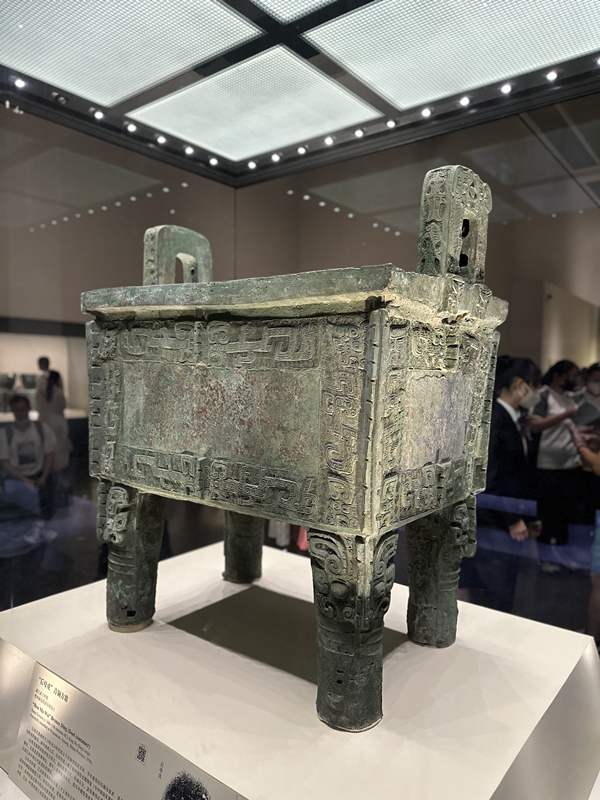Yinxu site
Author : REN ZHIYU Source : CHINESE SOCIAL SCIENCES TODAY 2023-08-01

“Hou Mu Wu” bronze ding, a ritual vessel unearthed at the Yinxu site, preserved in the National Museum of China Photo: Ren Guanhong/CSST
Yinxu (“The Ruins of Yin”), situated at present-day Xiaotun Village, Anyang, Henan Province, was a seat of royal power for the last nine Shang kings, from Wu Ding to Di Xin.
The existence of Yinxu came to light in 1899 by the accidental discovery of inscribed oracle bones, the earliest Chinese written records. In the 1870s and 1880s, Xiaotun villagers discovered some inscribed tortoise shells and animal bones. They called them “dragon bones” and sold them to traditional Chinese pharmacies as medicinal materials. It was not until 1899 that those inscriptions were first recognized as an ancient Chinese script type—the oracle bone inscriptions. For over 120 years, generations of scholars have explored these ancient scripts. Over 150,000 units of inscribed oracle bone have been discovered, including more than 4,000 individual characters, of which about one-third have been recognized and interpreted. These inscriptions vividly depict the Shang Dynasty in terms of diplomacy and warfare, food and feasts, weddings and funerals, and celestial phenomena such as shooting stars, and solar and lunar eclipses.
Most of the bronzeware excavated at Yinxu were ritual utensils, a feature that distinguishes the Shang from the other bronze civilizations in the world. The various bronzeware unearthed from the Yinxu represented the highest level of bronze casting in the world at that time. With a height of 1.33 meters and a weight of 875 kilograms, the “Hou Mu Wu” bronze ding, unearthed at Yinxu in 1939, is the largest bronze vessel ever excavated in the world, and it is estimated that its casting required more than 130 people at the time.
A tomb discovered in 1976 was identified as the final resting place of Fu Hao, a military general and the queen of King Wu Ding, who died around 1200 BCE. It is to date the only Shang royal tomb found intact with its contents and excavated by archaeologists. A total of 1,928 grave objects were unearthed from her tomb, including over 400 pieces of bronzeware, 750 jade items, more than 560 bone objects, as well as items made of stone, ivory, pottery, shells, etc.
Ye Shengtao made Chinese fairy tales from a wilderness
Ye Shengtao (1894–1988) created the first collection of fairy tales in the history of Chinese children’s literature...
-
How northern ethnicities integrated into Chinese nation
2023-09-18
-
Mogao caves
2023-09-12
-
Mogao Grottoes as ‘a place of pilgrimage’
2023-09-12
-
Time-honored architectural traditions in China
2023-08-29
-
Disentangling the civilizational evolution of China
2023-08-28
-
AI ethics in science fiction
2023-08-23














 2011-2013 by www.cssn.cn. All Rights Reserved
2011-2013 by www.cssn.cn. All Rights Reserved